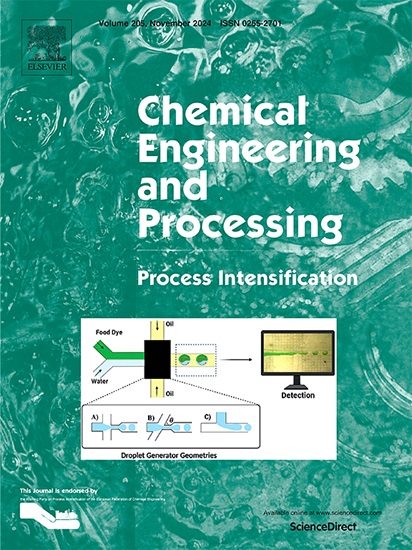A Bayesian optimization approach for stochastic data-driven Petlyuk distillation columns design
IF 3.8
3区 工程技术
Q3 ENERGY & FUELS
Chemical Engineering and Processing - Process Intensification
Pub Date : 2025-05-24
DOI:10.1016/j.cep.2025.110349
引用次数: 0
Abstract
In recent years, the drive to enhance process efficiency and reduce energy consumption has spurred interest in alternative systems, such as Petlyuk distillation columns. These systems have been demonstrated to achieve significant energy and cost savings compared to conventional distillation columns. Consequently, from an economic standpoint, the feasibility of a process is not solely defined by achieving high-purity products. Instead, achieving a balance between product purity and cost requires a multi-objective optimization approach. While traditional optimization methods are effective, emerging strategies such as Bayesian optimization offer distinct advantages for handling complex systems without requiring explicit mathematical models. Bayesian optimization can effectively handle the optimization process even when starting from a single initial point. However, as a black-box method, it demands careful examination of the impact of hyperparameters on the optimization process. This study explores two Petlyuk distillation columns as case studies, introducing a bi-level strategy for hyperparameter selection, including the acquisition function, kernel type, and the number of initial points. Furthermore, the influence of uncertainty in the Bayesian optimization process is explored, as this factor is critical in addressing real-world challenges. To simulate such conditions, the study incorporates scenarios designed to mimic the effects of uncertainty, providing valuable insights into its role in optimization outcomes.

随机数据驱动Petlyuk精馏塔设计的贝叶斯优化方法
近年来,提高工艺效率和降低能耗的动力激发了人们对替代系统的兴趣,如Petlyuk蒸馏塔。与传统蒸馏塔相比,这些系统已被证明可以显著节省能源和成本。因此,从经济的角度来看,工艺的可行性不仅仅是通过获得高纯度的产品来定义的。相反,实现产品纯度和成本之间的平衡需要多目标优化方法。虽然传统的优化方法是有效的,但新兴的策略,如贝叶斯优化,在不需要明确的数学模型的情况下,为处理复杂系统提供了明显的优势。贝叶斯优化即使从单个初始点出发,也能有效地处理优化过程。然而,作为一种黑盒方法,它需要仔细检查超参数对优化过程的影响。本研究探讨了两个Petlyuk精馏塔作为案例研究,介绍了超参数选择的双层策略,包括获取函数,核类型和初始点的数量。此外,本文还探讨了贝叶斯优化过程中不确定性的影响,因为这一因素对于解决现实世界的挑战至关重要。为了模拟这种情况,该研究纳入了模拟不确定性影响的场景,为其在优化结果中的作用提供了有价值的见解。
本文章由计算机程序翻译,如有差异,请以英文原文为准。
求助全文
约1分钟内获得全文
求助全文
来源期刊
CiteScore
7.80
自引率
9.30%
发文量
408
审稿时长
49 days
期刊介绍:
Chemical Engineering and Processing: Process Intensification is intended for practicing researchers in industry and academia, working in the field of Process Engineering and related to the subject of Process Intensification.Articles published in the Journal demonstrate how novel discoveries, developments and theories in the field of Process Engineering and in particular Process Intensification may be used for analysis and design of innovative equipment and processing methods with substantially improved sustainability, efficiency and environmental performance.

 求助内容:
求助内容: 应助结果提醒方式:
应助结果提醒方式:


